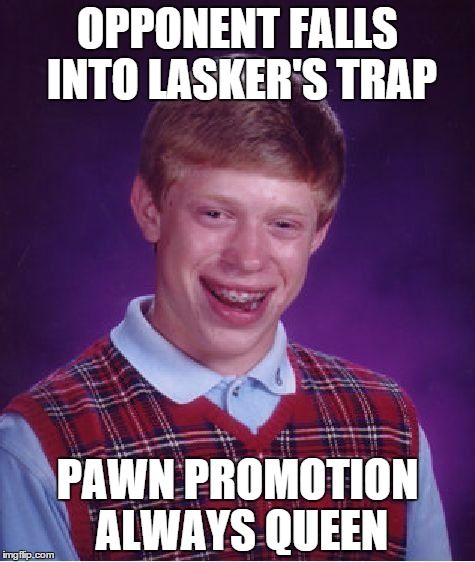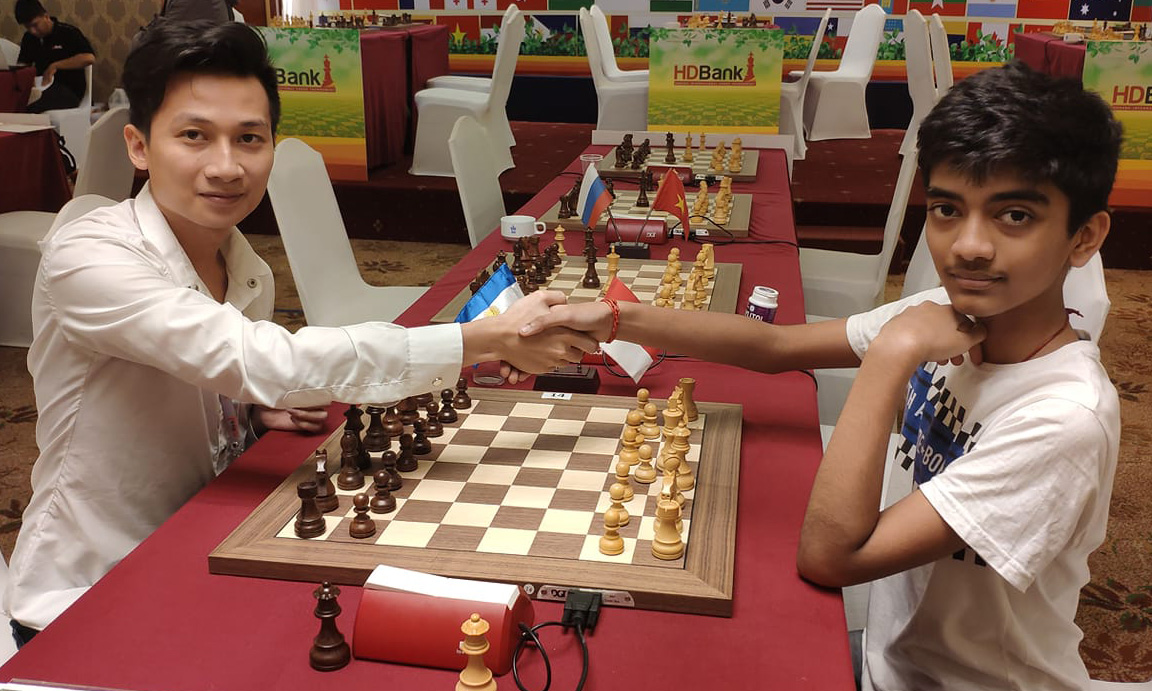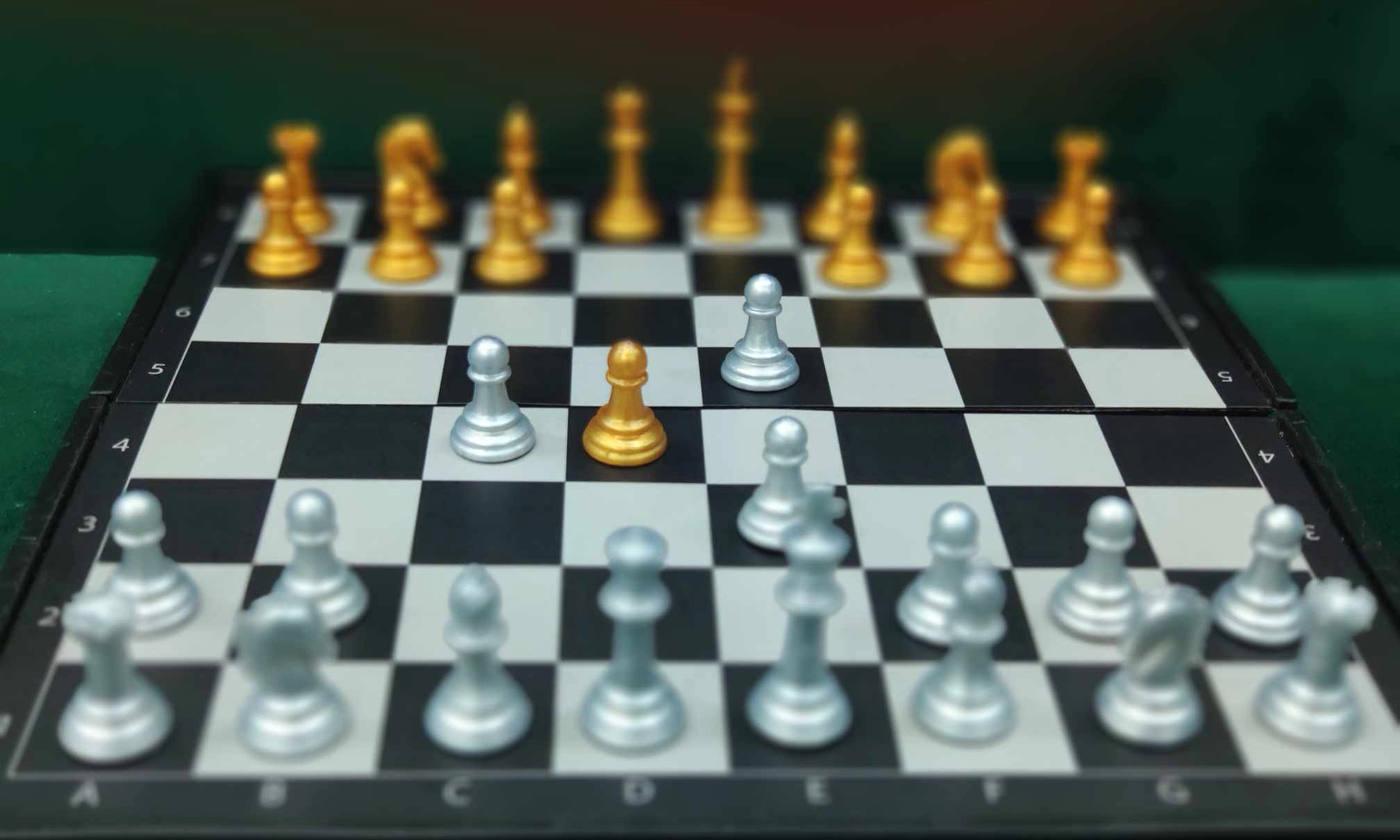Many, including advanced players and Masters, have fallen into the Lasker Trap. So, this article will guide you in both executing and defending against the trap effectively.
What is Lasker Trap?
The Lasker Trap is an opening trap in the Albin Countergambit, named after Emanuel Lasker. Notably, it involves an underpromotion as early as the seventh move.
Overview of the Albin Countergambit
The Albin Countergambit is a daring response to the most common opening move, 1. d4, by Black. In this gambit, Black willingly sacrifices a pawn, challenging White’s central pawn structure in exchange for dynamic piece play and strategic counterplay. It’s a provocative opening that can lead to unbalanced positions and offers Black the opportunity to dictate the flow of the game. The Albin Countergambit is known for its rich tactical possibilities, making it a favorite among players who appreciate dynamic and aggressive play.
The fundamental ideas in the Albin Countergambit center around the central pawn dynamics triggered by Black’s pawn sacrifice. Following 1. d4 d5 2. c4 e5, Black disrupts White’s central dominance, establishing an uneven pawn structure.
How the Lasker Trap Works
The strength of the black pawn at d4 might be underestimated. The inattentive move 4.e3 can fall into the Lasker Trap. Following 4… Bb4+ 5.Bd2 dxe3 6.Bxb4?, Black executes 6…exf2+ 7.Ke2 fxg1+! leading to a victory. The Lasker Trap stands out for its rarity in witnessing an underpromotion during practical play.
The Lasker Trap is a good example of sacrificing material to get active pieces. Even though Black gives up a pawn temporarily, it leads to open lines, active pieces, isolated & double pawns, and a weak White king. This strategic gain makes the Lasker Trap a strong tactic that works well for players who understand the balance between material and initiative.
Note: When playing this trap in an online game, remember to change the default promotion from Queen. Promoting the pawn to Queen on the 7th move of this trap can lead to a much less advantageous position.

Avoiding the Lasker Trap
Avoid playing 4.e3 if you’re not sufficiently prepared; otherwise, you might end up in a worse position. Opt for 4.Nf3 instead. Alternatively, consider playing a3 at some point to prevent Black’s bishop from going to b4. After playing a3, follow up with b4 and Bb2 to apply more pressure to Black’s d4 pawn. Avoid putting excessive effort into protecting the e5 pawn. Explore a real game from 2003 where White played 4.Nf3 and won.
The table below provides insights into choosing a suitable response to the Lasker Trap. Both 4.a3 and 4.e4 are playable. Personally, I suggest playing 4.e4, as it’s an uncommon move that can catch your opponent off guard. Review some lines below, and White consistently holds a slight to significant advantage.
| 4th move | # Games | White Wins | Black Wins |
| Nf3 | 72% | 50% | 46% |
| e3 | 11% | 37% | 59% |
| a3 | 8% | 51% | 44% |
| e4 | 3% | 51% | 45% |
Practical Examples
This example illustrates how a Lichess player with a rating of 1738 can lose in just 8 moves during a rated rapid game, falling into the trap exactly as per the theory. It emphasizes that one doesn’t need a high rating like 1854 (as seen for Black) to beat White; even a player rated 1000 can win against a stronger opponent by preparing well for this trap.
Conclusion
Knowing opening traps is essential for chess players. It’s not just about memorizing moves but also recognizing patterns, understanding principles, and foreseeing potential problems. Opening traps offer chances for tactical success and tools to gain a strategic edge. Understanding traps like the Lasker Trap helps players navigate the early game with confidence, turning possible challenges into advantages and setting the stage for a successful middle game.
As we finish our look into the Lasker Trap, I urge readers to explore different chess openings on their own. Trying out various openings not only enhances chess strategy understanding but also brings flexibility to one’s playing style. The pursuit of knowledge in chess is continuous, and being open to exploring different openings enhances a profound appreciation for the richness and complexity of the game. So, fellow chess lovers, go ahead, discover the secrets of diverse openings, and let the chessboard be your canvas for strategic expression.

I’m Xuan Binh, the founder of Attacking Chess, and the Deputy Head of Communications at the Vietnam Chess Federation (VCF). My chess.com and lichess rating is above 2300, in both blitz and bullet.


2 thoughts on “Lasker Trap: How to win a chess game in 7 moves”
Comments are closed.